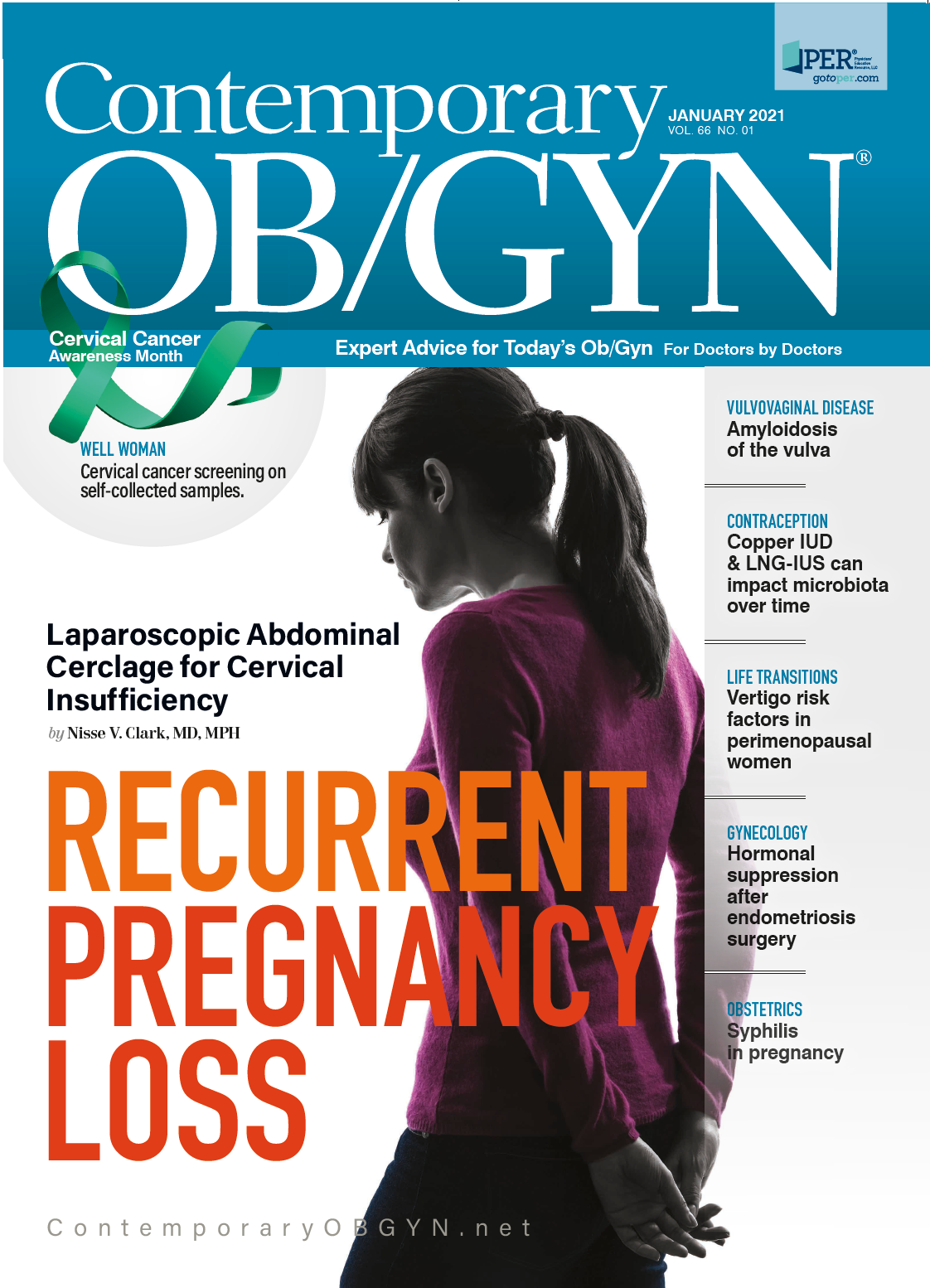Vertigo risk factors in perimenopausal women
It has yet to be fully elucidated why postmenopausal women have a higher prevalence of benign paroxysmal positional vertigo (BPPV); however, the sudden decrease in estrogen during menopause can cause a rapid decrease in estrogen receptors, which may disturb otoconial metabolism and thus, increase the prevalence of BPPV.
Likewise, hormone replacement therapy can reverse low otoconin 90 levels, thus reducing the incidence of BPPV.
These are two findings published in the journal Frontiers in Neuroscience from a review of BPPV risk factors unique to perimenopausal women.1
“Adoption of a customized approach considering the neurochemical changes in perimenopause will be extremely helpful for the management of BPPV in women,” wrote sole author Seon-Hae Jeong, MD, PhD, of the Department of Neurology at Chungnam National University Hospital and School of Medicine in Deajeon, South Korea. “Cooperative management among neurotologists, endocrinologists, and gynecologists is also important as a focus for neurotological disorders, including BPPV, in women.”1
BPPV is the most common cause of recurrent vertigo, affecting more than 420 million adults worldwide and a lifetime prevalence of 10%. The disorder also increases with age, especially during menopause.2
The review highlights the current state of knowledge about BPPV risk factors specific to women. Older age, head and neck trauma, inactivity, and ear problems are some of the common factors that may increase the susceptibility of women to BPPV.
Recurrent BPPV might also be caused by oral contraceptives because they may induce disturbances in the water and electrolyte balance, variances in endolymph pH, and abnormalities in carbohydrate or lipid metabolism. These occurrences could cause otoconial degeneration and subsequent otoconial detachment and BPPV.
In addition, some women are initially diagnosed with BPPV during pregnancy.
Decreased bone mineral density is also linked to the occurrence and/or recurrence of BPPV. In women undergoing rapid bone loss after menopause, bone resorption and urinary calcium ion excretion are increased; These changes are reversed by estrogen replacement therapy.
Because estrogen loss is a causal factor for bone loss during perimenopause, a specific estrogen replacement modulator could be used to treat postmenopausal BPPV patients.
One prospective study found that women taking postmenopausal hormone replacement therapy achieved better scores than the placebo group on the Kupperman scale for sweating, hot flashes, myalgia and vertigo.3
“The hormonal fluctuation of ovarian neurosteroids might trigger the occurrence/recurrence of BPPV during the perimenopausal period,” Jeong wrote.
Another study concluded that the incidence of BPPV was significantly lower in patients taking estrogen for menopausal syndrome in two age groups: ages 45 to 65 and ages 65 and over.4
A potential mechanism that allows for the efficacy of estrogen supplementation to decrease the occurrence of BPPV in women with menopause is estrogen blood levels that are more complete and more reliable, thus inducing protective effects, estrogen effects on autophagy and possible epigenetic modulation.
However, because the chronic use of hormone replacement therapy increases the risk of breast cancer, stroke and venous thrombosis, many postmenopausal women rely on alternative nonsteroidal estrogen mimetics or natural remedies.
Phytoestrogens, including soy isoflavones, could be an option, but so far there have been no reports on the efficacy of phytoestrogens on BPPV recurrence.
“Future studies are necessary to validate the effects of hormonal replacement therapy and phytoestrogen in women with recurrent BPPV,” Jeong wrote.
__
References
- Jeong SH. Benign paroxysmal positional vertigo risk factors unique to perimenopausal women. Front Neurol. Published online October 16, 2020. doi:10.3389/fneur.2020.589605
- Kim HJ, Lee JO, Choi JY, Kim JS. Etiologic distribution of dizziness and vertigo in a referral-based dizziness clinic in South Korea. J. Neurol. (2020) 267:2252–59. 10.1007/s00415-020-09831-2
- Bech P, Munk-Jensen N, Obel EB, Ulrich LG, Eiken P, Nielsen SP. Combined versus sequential hormonal replacement therapy: a double-blind, placebo-controlled study on quality of life-related outcome measures. Psychother. Psychosom. (1998) 67:259–65. 10.1159/000012289
- Liu DH, Kuo CH, Wang CT, Chiu CC, Chen TJ, Hwang DK, et al. . Age-related increases in benign paroxysmal positional vertigo are reversed in women taking estrogen replacement therapy: a population-based study in Taiwan. Front. Aging Neurosci. (2017) 9:404. 10.3389/fnagi.2017.00404

S4E1: New RNA platform can predict pregnancy complications
February 11th 2022In this episode of Pap Talk, Contemporary OB/GYN® sat down with Maneesh Jain, CEO of Mirvie, and Michal Elovitz, MD, chief medical advisor at Mirvie, a new RNA platform that is able to predict pregnancy complications by revealing the biology of each pregnancy. They discussed recently published data regarding the platform's ability to predict preeclampsia and preterm birth.
Listen
Low creatinine-to-cystatin C ratio linked to postmenopausal muscle loss
March 20th 2025A new study finds that postmenopausal women with a reduced creatinine-to-cystatin C ratio experience decreased muscle volume and slower walking speed, highlighting its role as a potential biomarker for muscle health.
Read More
sFLT1/PLGF ratio may improve risk stratification for birth outcomes
March 17th 2025A recent study suggests that the soluble fms-like tyrosine kinase 1 to placental growth factor ratio can help predict clinical deterioration, intrapartum fetal distress, and mode of delivery, offering valuable insights for patient counseling and labor management.
Read More
